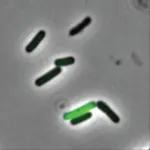(Press-News.org) A very subtle and seemingly random type of eye movement called ocular drift can be influenced by prior knowledge of the expected visual target, suggesting a surprising level of cognitive control over the eyes, according to a study led by Weill Cornell Medicine neuroscientists.
The discovery, described Apr. 3 in Current Biology, adds to the scientific understanding of how vision—far from being a mere absorption of incoming signals from the retina—is controlled and directed by cognitive processes.
“These eye movements are so tiny that we’re not even conscious of them, and yet our brains somehow can use the knowledge of the visual task to control them,” says study lead author Dr. Yen-Chu Lin, who carried out the work as a Fred Plum Fellow in Systems Neurology and Neuroscience in the Feil Family Brain and Mind Research Institute at Weill Cornell Medicine.
Dr. Lin works in the laboratory of study senior author Dr. Jonathan Victor, the Fred Plum Professor of Neurology at Weill Cornell Medicine.
The study involved a close collaboration with the laboratory of Dr. Michele Rucci, professor of brain and cognitive sciences and neuroscience at the University of Rochester.
Neuroscientists have known for decades that information stored in memory can strongly shape the processing of sensory inputs, including the streams of visual data coming from the eyes. In other words, what we see is influenced by what we expect to see or the requirements of the task at hand.
Most studies of cognitive control over eye movement have covered more obvious movements, such as the “saccade” movements in which the eyes dart across large parts of the visual field. In the new study, Drs. Lin and Victor and their colleagues examined ocular drift, tiny jitters of the eye that occur even when gaze seems fixed. Ocular drifts are subtle motions that shift a visual target on the retina by distances on the order of a fraction of a millimeter or so—across just a few dozen photoreceptors (cones). They are thought to improve detection of small, stationary details in a visual scene by scanning across them, effectively converting spatial details into trains of visual signals in time.
Prior studies had suggested that ocular drift and other small-scale “fixational eye movements” are under cognitive control only in a broad sense—for example, slowing when scanning across more finely detailed scenes. In the new study, the researchers found evidence for a more precise type of control.
Using sensitive equipment in Dr. Rucci’s laboratory, the researchers recorded ocular drifts in six volunteers who were asked to identify which of a pair of letters (H vs. N, or E vs. F) was being shown to them on a background of random visual noise. Based on computational modeling, the scientists expected that optimal eye movements for discriminating between letters would cross the key elements distinguishing the letters at right angles. Thus, they hypothesized that a more precise cognitive control, if it existed, would tend to direct ocular drift in both vertical and oblique (lower left to upper right) directions for the H vs. N discrimination, compared to more strictly vertical movements for the E vs. F discrimination.
They found that the subjects’ eye movements did indeed tend to follow these patterns—even in the 20 percent of trials in which the subjects, though expecting to see a letter, were shown only noise. The latter result showed that the cognitive control of ocular drift could be driven solely by specific prior knowledge of the visual task, independently of any incoming visual information.
“These results underscore the interrelationship between the sensory and the motor parts of vision—one really can’t view them separately,” said Dr. Victor, who is also a professor of neuroscience in the Feil Family Brain and Mind Research Institute at Weill Cornell.
He noted that the direction of fine eye movements is thought to come from neurons in the brainstem, whereas the task knowledge presumably resides in the upper brain: the cortex—implying some kind of non-conscious connection between them.
“The subjects are aware of the tasks they have to do, yet they don't know that their eyes are executing these tiny movements, even when you tell them,” Dr. Victor said.
Studies of this pathway, he added, could lead to better insights not only into the neuroscience of vision, but possibly also visual disorders—which traditionally have been seen as disorders of the retina or sensory processing within the brain.
“What our findings suggest is that visual disorders may sometimes have a motor component too, since optimal vision depends on the brain’s ability to execute these very tiny movements,” Dr. Victor said.
END
Tiny eye movements are under a surprising degree of cognitive control
2023-04-03
ELSE PRESS RELEASES FROM THIS DATE:
Griffin Charitable Foundation donates $71,000 to the Masonic Medical Research Institute
2023-04-03
UTICA, NY –A $71,000 donation by the Griffin Charitable Foundation, based in Rome, New York, was awarded to the Masonic Medical Research Institute (MMRI) to purchase a new state-of-the-art microscope for imaging cells. “It came as wonderful news that the Foundation pledged this generous donation,” said Stephen F. Izzo, MMRI’s Development Director. “This gift will make a profound impact on our research capabilities.”
The Griffin Charitable Foundation supports not-for-profit entities serving Rome and select organizations ...
Patients with schizophrenia have favorable surgical risk, opening the door for ethical consideration of neurosurgical interventions like Deep Brain Stimulation
2023-04-03
AURORA, Colo. (April 3, 2023) – A study published in Frontiers in Surgery finds that people with schizophrenia (SZ) and schizoaffective disorder (SAD) have overall lower surgical risk than people with Parkinson’s disease, which is reassuring when considering potential surgical interventions such as Deep Brain Stimulation (DBS) for the treatment of SZ and SAD.
DBS, a procedure that implants electrodes in the deeper structures of the brain connected to generators in the chest, is rare in treating SZ and ...
A 21st-century remedy for missed meds
2023-04-03
HOUSTON – (April 3, 2023) – Missing crucial doses of medicines and vaccines could become a thing of the past thanks to Rice University bioengineers’ next-level technology for making time-released drugs.
“This is a huge problem in the treatment of chronic disease,” said Kevin McHugh, corresponding author of a study about the technology published online in Advanced Materials. “It’s estimated that 50% of people don't take their medications correctly. With this, you’d give them one shot, and they’d be all set for the next couple of months.”
When patients fail to take prescription medicine or take it incorrectly, the costs can ...
Research suggests avenues toward gene therapies for polycystic kidney disease
2023-04-03
New Haven, Conn. — Autosomal dominant polycystic kidney disease (ADPKD) is the most common potentially lethal genetic disease—about a half million people in the United States alone suffer from the condition. There is no cure, but new research could open the door to new gene therapies for treating most cases of the disease.
For several decades, researchers have known that mutations in the PKD1 gene, which encodes the polycystin-1 (PC1) protein, can cause the disease in about 80% of cases. However, the protein is too big to be modified through gene therapy strategies. Now, a research ...
New research shows that bacteria get “hangry," too
2023-04-03
Have you ever been so hungry that you become angry, otherwise known as “hangry?” New research by Adam Rosenthal, PhD, assistant professor in the Department of Microbiology and Immunology, has found that some bacteria cells get hangry too, releasing harmful toxins into our bodies and making us sick.
Rosenthal and his colleagues from Harvard, Princeton and Danisco Animal Nutrition discovered, using a recently developed technology, that genetically identical cells within a bacterial community have different functions, with some members behaving more docile and others producing the very toxins that make us feel ill.
“Bacteria behave much more ...
Mount Sinai awarded prestigious $1.3 million grant to expand research training program in skin biology
2023-04-03
The Kimberly and Eric J. Waldman Department of Dermatology at the Icahn School of Medicine at Mount Sinai will expand its research training program in skin biology with support from a five-year, $1.3 million T32 grant from the National Institutes of Health (NIH) and the National Institute of Arthritis and Musculoskeletal and Skin Diseases (NIAMS).
The research training program in Systems Skin Biology will take a multidisciplinary approach in teaching scientists to holistically understand human physiology, health, and disease. As a recognized leader in research for skin biology and skin diseases, Mount Sinai will also become an incubator for future ...
MU grant will help ease nursing workforce shortage
2023-04-03
COLUMBIA, Mo. -- A recent grant from the Missouri Department of Economic Development will help train hundreds of MU students to become part-time nurse assistants at MU Health Care.
The three-year grant, which starts in fall 2023, will create a three-credit hour elective course within the MU Sinclair School of Nursing. The class will help nearly 100 MU students each year earn paid, part-time positions within MU Health Care as nurse assistants, also known as unlicensed assistive personnel (UAPs), certified nurse assistants (CNAs) and patient care technicians.
“We currently have nearly 800 pre-nursing undergraduate students at MU, and as a professor teaching a freshmen-level course, I ...
Yale-led team creates comprehensive resource for impact of genomic variants
2023-04-03
New Haven, Conn. — Each person has about 4 million sequence differences in their genome relative to the reference human genome. These differences are known as variants. A central goal in precision medicine is understanding which of these variants contribute to disease in a particular patient. Therefore, much of the human genome annotation effort is devoted to developing resources to help interpret the relative contribution of human variants to different observable phenotypes – i.e., determining variant impact.
Recently, Yale School of Medicine led a large NIH-sponsored study where multiple institutions and international collaborators came together ...
Illegal trade and poor regulation threaten pangolins in China
2023-04-03
Pangolins, unique scale-covered mammals, are drastically declining in numbers across Asia and Africa, largely due to illegal trade. Part of the trade, both legal and illegal, supports the traditional Chinese medicine market, which has attracted conservation attention. The level of demand for pangolins and other animals in traditional Chinese medicine, however, hasn’t been thoroughly studied.
In a new study published in the journal Nature Conservation, Dr Yifu Wang, currently a postdoc researcher at the University ...
DELLA proteins could hold key to the next Green Revolution
2023-04-03
A family of ‘promiscuous’ proteins found in all land plants is responsible for many different plant functions, despite remaining relatively unchanged for over 450 million years.
New findings, published in Nature Plants and New Phytologist reveal new knowledge about how DELLA proteins regulate how much a plant grows, when germination occurs and how plants deals with threats such as drought and disease. The key is not in DELLA proteins’ ability to mutate over time, but instead in their ability to interact with dozens of different transcription factors, the proteins responsible for decoding DNA.
Understanding the mechanisms which underpin ...




